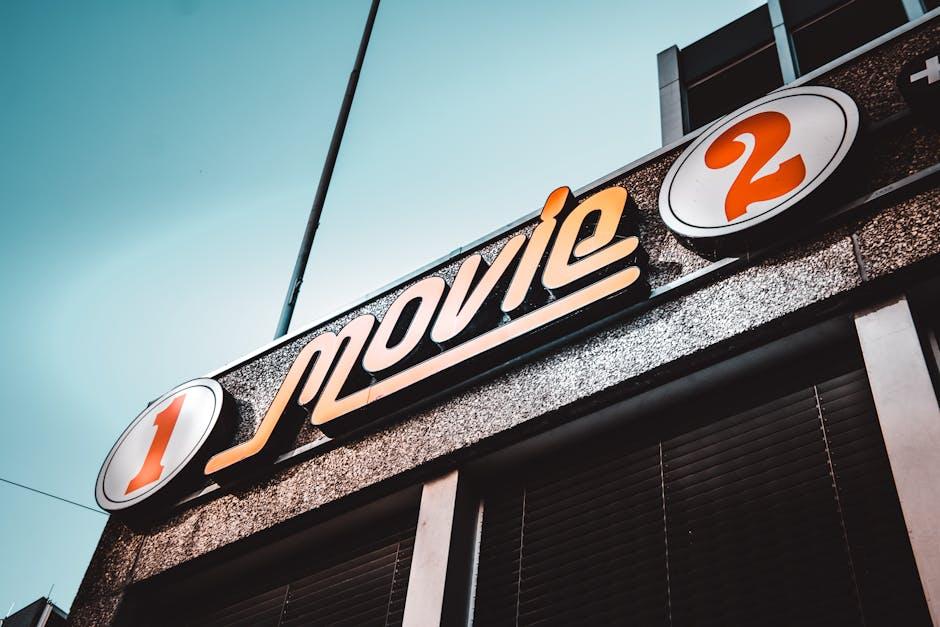In the ever-evolving landscape of cinema, the dichotomy between blockbuster behemoths and indie gems has become increasingly pronounced. As Hollywood churns out high-budget spectacles designed to captivate global audiences, a pressing question emerges: Are these modern blockbusters overshadowing the nuanced, often daring narratives of smaller, independent films? This article delves into the intricate dynamics at play, examining how financial powerhouses influence audience preferences, distribution channels, and cultural discourse. With an analytical lens, we explore the implications for filmmakers and cinephiles alike, navigating the complex interplay between commercial success and artistic integrity in today’s cinematic universe.
Impact of Big Budgets on Audience Preferences
- Visual Spectacle: High-budget films often captivate audiences with their stunning visual effects and grandiose set pieces. The allure of state-of-the-art CGI and immersive worlds can make these blockbusters irresistible, setting a standard that reshapes what viewers expect from a cinematic experience.
- Marketing Prowess: The financial muscle behind these productions extends beyond the screen, enabling extensive marketing campaigns that dominate media channels. This saturation can overshadow smaller films, making it challenging for indie projects to capture attention despite their unique narratives.
While big-budget films cater to the masses with their universal appeal, they also influence the cultural landscape, creating a cycle where audience preferences lean towards mainstream offerings. However, this doesn’t entirely eclipse indie films; instead, it challenges them to innovate and find niche audiences who crave authenticity and originality. The juxtaposition of these two film worlds encourages a diverse cinematic ecosystem, though the scales may often tip in favor of the blockbuster behemoths.
 Distribution Channels and Accessibility”>
Distribution Channels and Accessibility”>
Analyzing Distribution Channels and Accessibility
In the realm of film distribution, the disparity between modern blockbusters and indie films often hinges on the channels through which they reach audiences. Major studios have the upper hand, leveraging vast networks and resources to secure prime spots in theaters worldwide. Their films often dominate screens, leaving limited space for indie productions. On the other hand, independent filmmakers typically rely on a patchwork of smaller, regional theaters, festivals, and increasingly, digital platforms. While these avenues offer accessibility, they lack the expansive reach of traditional cinema chains.
- Streaming Platforms: While offering a lifeline to indie films, they often prioritize content with mass appeal.
- Film Festivals: Essential for indie exposure but limited in audience size and geographical reach.
- Local Theaters: Supportive of indie films but overshadowed by multiplexes showcasing blockbuster hits.
Accessibility remains a critical challenge. Although digital platforms democratize access, the sheer volume of content can bury smaller films. The key lies in strategic partnerships and innovative marketing to carve out visibility amidst the blockbuster blitz. Understanding these dynamics is essential for indie filmmakers aiming to thrive in a landscape dominated by major studios.

The Role of Film Festivals in Indie Film Promotion
Film festivals serve as a vital platform for the promotion and recognition of independent films. They offer a unique environment where indie filmmakers can showcase their work to an audience that includes not only cinephiles but also industry professionals, critics, and potential distributors. Film festivals like Sundance, Cannes, and Toronto have become synonymous with the discovery of groundbreaking indie films, providing a launchpad that can propel these smaller productions into the public eye.
The impact of film festivals on indie films can be seen through various benefits:
- Visibility and Exposure: Festivals create buzz and provide media exposure that indie films might not achieve otherwise.
- Networking Opportunities: They offer filmmakers the chance to connect with industry insiders, potentially leading to distribution deals.
- Critical Acclaim: Awards and accolades from prestigious festivals can significantly enhance a film’s reputation and appeal.
While modern blockbusters often dominate mainstream attention, film festivals remain a beacon for indie films, ensuring they receive the recognition and opportunities they deserve.

Strategies for Balancing Blockbuster Dominance and Indie Success
In the ever-evolving landscape of cinema, achieving a balance between the overwhelming presence of blockbuster films and the nuanced charm of indie productions requires strategic ingenuity. One effective approach is to enhance visibility for indie films through curated film festivals and niche streaming platforms. These platforms can offer tailored recommendations, allowing audiences to discover hidden gems that might otherwise be eclipsed by high-budget counterparts.
Moreover, fostering collaborative partnerships between indie filmmakers and larger studios can be mutually beneficial. Such alliances can provide indie creators with access to wider distribution networks while enabling big studios to diversify their portfolios with unique, original content. Consider these strategies:
- Cross-Promotion: Leverage blockbuster releases to promote indie films with similar themes or genres.
- Community Engagement: Utilize social media and grassroots campaigns to build dedicated fan bases for indie projects.
- Innovative Funding Models: Encourage investment in indie films through crowd-funding or co-production deals.
By adopting these strategies, the industry can create a more equitable cinematic environment where both blockbuster and indie films thrive, enriching the cultural tapestry of storytelling.

